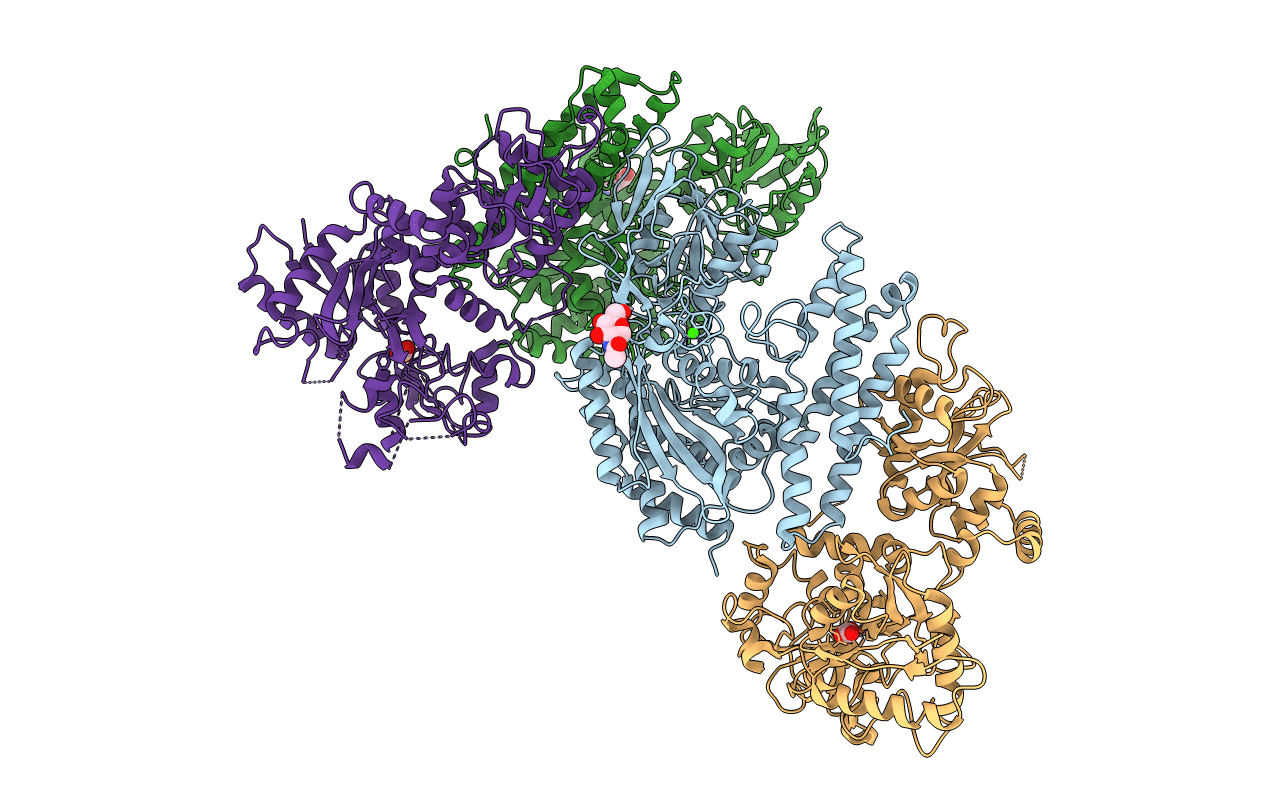
Deposition Date
2011-06-01
Release Date
2011-08-10
Last Version Date
2024-10-30
Entry Detail
PDB ID:
3S9L
Keywords:
Title:
Complex between transferrin receptor 1 and transferrin with iron in the N-Lobe, cryocooled 2
Biological Source:
Source Organism:
Homo sapiens (Taxon ID: 9606)
Host Organism:
Method Details:
Experimental Method:
Resolution:
3.22 Å
R-Value Free:
0.31
R-Value Work:
0.27
Space Group:
P 43 2 2


